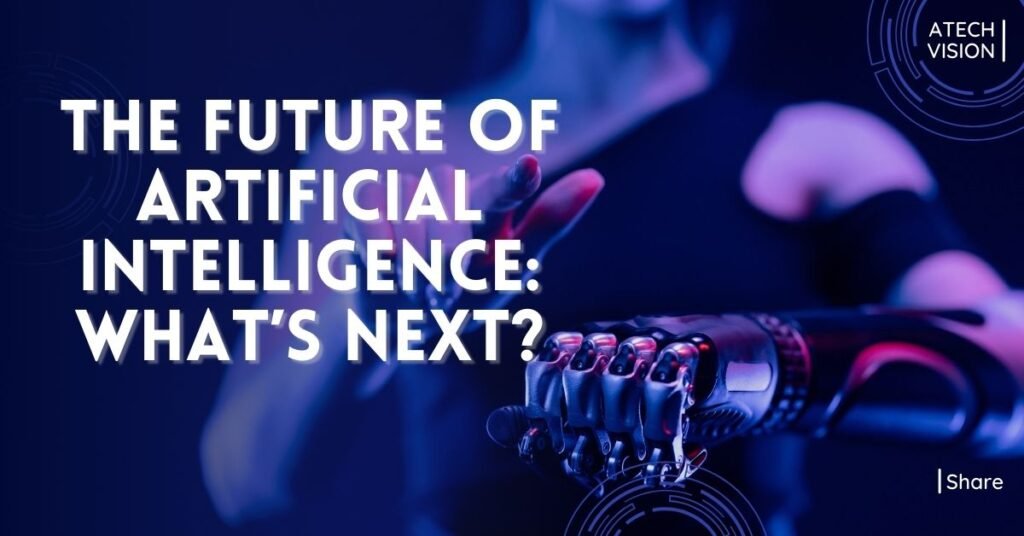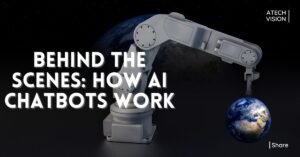
Artificial Intelligence (AI) has grown exponentially over the past decade, permeating every aspect of human life, from healthcare to entertainment. As we look ahead, the future of AI promises groundbreaking innovations and societal shifts. In this article, we’ll delve into emerging AI trends, challenges, and potential applications that could define the next phase of its evolution.
1. The Current State of AI
Before exploring the future, it’s crucial to understand where AI stands today.
Applications Across Industries
• Healthcare: AI aids in diagnosing diseases, drug discovery, and personalized medicine.
• Finance: Automates trading, fraud detection, and risk assessment.
• Retail: Enhances customer experiences through recommendation engines and supply chain optimization.
• Transportation: Autonomous vehicles are becoming a reality.
• Creative Fields: AI tools like DALL-E and ChatGPT enable creative outputs like artwork, writing, and music composition.
These applications represent just the tip of the iceberg. As computational power increases and data becomes more accessible, AI will likely penetrate even deeper into everyday life.
2. Emerging Trends in AI Development
a. Generative AI
Generative AI models, such as GPT-4 and DALL-E, have already revolutionized content creation. The future will likely see these models becoming more:
• Contextually aware.
• Emotionally intelligent.
• Versatile in generating multimodal outputs (text, images, video, and sound).
b. Autonomous Systems
• Self-Driving Cars: Companies like Tesla, Waymo, and Cruise are pushing toward Level 5 autonomy, where no human intervention is required.
• Robotics: Advanced robots could revolutionize manufacturing, elder care, and disaster response.
c. AI and Quantum Computing
Quantum AI holds the promise of solving complex problems that classical AI cannot, such as optimizing global supply chains or accelerating drug discovery.
d. AI in Personalization
As AI models improve, hyper-personalized experiences in entertainment, healthcare, and e-commerce will become standard. Algorithms will predict user needs with unprecedented accuracy.
3. Challenges in AI Development
a. Ethical Dilemmas
AI raises concerns about bias, privacy, and accountability. For instance:
• Bias in AI Models: Algorithms can perpetuate existing societal biases if trained on biased data.
• Privacy Concerns: The vast data collection needed for AI applications can infringe on personal privacy.
• Decision Accountability: Determining responsibility for AI-driven decisions (e.g., accidents involving autonomous vehicles) is still unresolved.
b. Regulation and Policy
Governments worldwide are grappling with how to regulate AI without stifling innovation. The EU’s AI Act is a step in this direction, aiming to classify AI systems based on risk levels.
c. Security Threats
• AI in Cybersecurity: While AI can strengthen security, it can also be weaponized for hacking and misinformation campaigns.
• Deepfakes: The misuse of generative AI to create convincing fake videos and audio is a growing concern.
4. What’s Next for AI?
a. Human-AI Collaboration
Rather than replacing humans, AI will increasingly act as an assistant, enhancing human capabilities in areas like:
• Medicine: AI can assist surgeons with precision tools and real-time data.
• Education: Adaptive learning platforms will tailor educational content to individual students’ needs.
• Art and Design: AI will continue to be a co-creator in creative fields, working alongside artists and designers.
b. AI in Climate Action
AI will play a crucial role in addressing climate change by:
• Monitoring Emissions: Using satellites and sensors to track global carbon levels.
• Optimizing Energy Use: Enhancing the efficiency of renewable energy systems.
• Predicting Disasters: Providing early warnings for natural disasters using predictive modeling.
c. Expanding Accessibility
AI-powered tools will make technology more accessible for people with disabilities. Examples include:
• Speech-to-Text Systems: For hearing-impaired users.
• AI-Powered Wheelchairs: Autonomous navigation for enhanced mobility.
d. Advances in Natural Language Processing (NLP)
Future NLP systems will:
• Understand context better.
• Handle multiple languages more effectively.
• Generate nuanced and culturally aware responses.
5. Speculative AI Innovations
a. AI-Powered Brain-Computer Interfaces (BCIs)
Companies like Neuralink are exploring AI-integrated BCIs, enabling direct communication between the human brain and machines. This could redefine how humans interact with technology.
b. AI in Space Exploration
AI could play a key role in:
• Analyzing Data from Other Planets: Automating the study of data collected by rovers and satellites.
• Autonomous Spacecraft: Navigating distant regions of space without human input.
c. AI-Enhanced Creativity
In the future, AI could generate entire movies, books, or music albums, creating a new genre of AI-authored art.
6. Preparing for an AI-Driven Future
To harness AI’s potential while mitigating its risks, society must:
• Invest in Education: Equip the workforce with skills to thrive in an AI-dominated economy.
• Focus on Ethics: Ensure AI is developed and used responsibly.
• Strengthen Collaboration: Foster partnerships between governments, private sectors, and academia to advance AI research.
Conclusion
The future of AI is filled with promise and challenges. As we move toward an AI-driven world, balancing innovation with ethical considerations will be crucial. From personalized medicine to space exploration, AI can potentially redefine humanity’s trajectory. The question is not whether AI will shape the future but how we will shape its role in our lives.



